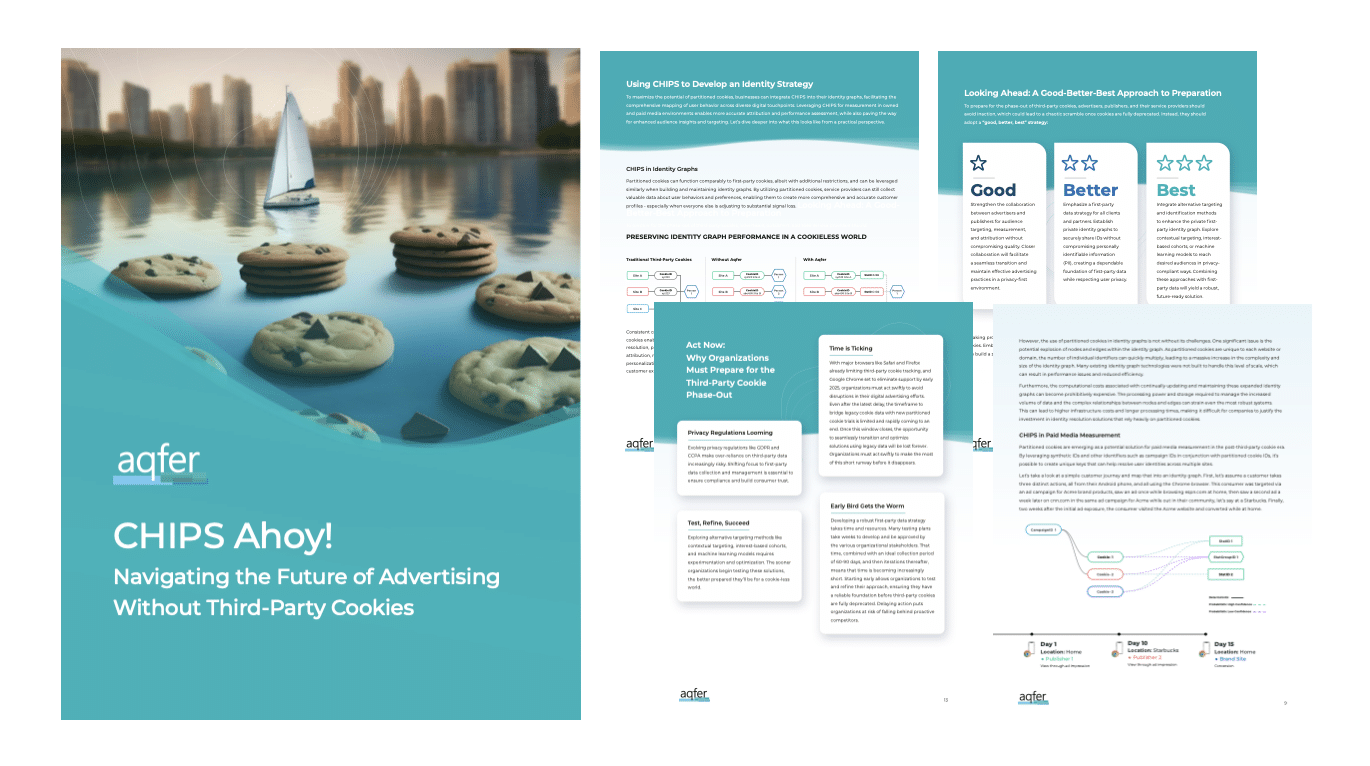By: Daniel Jaye | April 2, 2024
Contrary to popular belief, third-party cookies, which are extensively used for tracking users across websites, are not being phased out. Instead, they are undergoing a significant transformation in their functionality. Despite numerous delays and widespread claims of the impending demise of third-party cookies by the industry, including Google, the reality is different.
Upon examining Chrome’s new cookie handling, it becomes clear that third-party cookies are not disappearing entirely. Instead, they are being compartmentalized or partitioned. These partitioned cookies, also known as ‘Cookies Having Independent Partitioned State’ or CHIPS, will continue to exist and be accessible by third parties. However, their scope will be limited to individual websites that users visit.
The primary motivation behind this change is to curb cross-site tracking, a long-standing privacy concern. The industry needs to address these valid privacy concerns of users while acknowledging that marketers have certain use cases that can strike a reasonable balance between the risk of harm and benefit, provided they are combined with suitable technical and procedural safeguards.
Understanding Partitioned Cookies
Companies that have depended on third-party cookies to establish a single user identity across multiple sites will now face the challenge of having a unique identifier for each site. This means that an individual user may end up with hundreds of separate IDs, a significant shift from the past. This change has substantial implications for memory, processing, and storage requirements for existing applications.
To manage the surge of user identifiers while respecting privacy expectations, innovative approaches will be needed to cluster and connect identities across websites. This will necessitate the construction of identity graphs that focus on linking identifiers, a departure from the current practice of creating a single unified identifier from the outset. Partitioned cookies will serve as deterministic nodes in an identity graph, with probabilistic techniques employed to create the edges that connect these nodes into a cluster with a single identifier.
What Use Cases Are Impacted?
When considering the use cases affected by changes in cookie policies, we can generally divide them into two main categories: analytics and decisioning:
Analytics
Analytics use cases can utilize partitioned cookie data clusters, enabling existing analytics to proceed with minimal alterations. This is typically acceptable if the data is thoroughly anonymized and measures are in place to prevent reidentification.
Decisioning
Decisioning use cases, including ad targeting, retargeting, creative selection using third-party or first-party data, and content personalization using third-party data, will also be affected. Using partitioned cookie clusters along with privacy-conscious data collaboration methods can support these use cases. However, it’s crucial to remember that directly activating media based on partitioned cookies may contravene the purpose of the third-party cookie changes. Additional protective measures such as data aggregation or techniques that introduce uncertainty about whether the user experience was due to the linked data are strongly recommended to mitigate this.
What Businesses Are Impacted?
Several types of businesses will be significantly affected by cookie deprecation and partitioning.
Media Companies
Media companies with multiple properties may find it difficult to maintain a unified view of users across their various properties, potentially failing to meet the requirements of reporting and workflow software. They will need to link their unrecognized inventory to authenticated identities to address programmatic yield and potential signal loss for buyers/bidders.
Buy-Side Entities
Buy-side entities, like advertisers and DSPs, will encounter challenges in performance management, reach and frequency management, creative sequencing and selection, targeting and retargeting, and personalization using first and third-party data. View-through attribution and multi-touch attribution, including cross-device tracking, will also be impacted.
Intermediaries
Intermediaries such as SSPs, which manage ads and tags across numerous publisher sites, will face significant cookie proliferation issues due to the changes in cookie policies.
In general, the focus will be on developing technologies and strategies to cluster and link partitioned cookies, likely using probabilistic methods, to maintain crucial capabilities around identification, attribution, analytics, and activation, but in a privacy-compliant way (e.g., data anonymization). The extent of the cookie proliferation issue depends on the number of sites a user visits.
Get Ready, as Action Is Required
Adapting identity graph technology to the partitioned future will require new techniques to efficiently cluster and connect the large number of IDs in real time. During the transition period, companies can leverage the overlap between legacy and partitioned third-party cookies to connect existing user data to new identifiers.
The shift to partitioned cookies ultimately won’t be apocalyptic for marketing and advertising, as user identification will still be possible. However, it will require retooling identity resolution approaches and adapting to a higher volume of identifiers. With preparation, the transition can be managed while preserving essential cookie functions.
What Does a Practical Solution Look Like?
One key parameter of a practical solution will be its ability to incorporate additional evidence beyond just the identifiers themselves when establishing the links between nodes. Storing attributes on the edges of the graph rather than the nodes will enable consideration of a wider range of signals in a resolution process. Once a strong edge is established between two nodes, they can be collapsed together into a single cluster along with any other connected nodes, allowing for a single resolved identifier to be created.
For companies with existing identity graphs, they’ll need an identity resolution solution that can slot in without requiring a full replacement of that existing infrastructure. The solution would then act as a surrogate for the current Chrome unpartitioned cookies, taking in the hundreds of potential additional identifiers that may exist for a user and distilling them down to a single cluster ID that can be incorporated into the existing graph. The solution should also be able to forward the resolved data into other existing solutions a company may be using.
The optimal solution is to bridge legacy data with the new partitioned identifiers during the interim period before third-party cookies are fully deprecated. By establishing edges between old and new cookies and writing legacy cookie values into the new partitioned cookies, historical user data can be carried forward for a seamless transition.
By taking a graph-based approach tailored to the unique characteristics of partitioned identifiers, companies can maintain a unified view of users across all the various touch points they may have. This will allow companies to continue delivering personalized experiences, measuring marketing effectiveness, and gaining customer insights even in a post-third-party cookie world with the appropriate technical and procedural privacy safeguards.
How to Navigate Cookie Partitioning
To better understand the future of the digital marketing landscape, our team developed a thorough white paper covering what to expect, and how to leverage CHIPS. Fill out the form below to download the paper and learn practical approaches for integrating CHIPS into your existing identity strategy.

Get It Now
About the Author

Daniel Jaye
Chief Executive Officer
Dan has provided strategic, tactical and technology advisory services to a wide range of marketing technology and big data companies. Clients have included Altiscale, ShareThis, Ghostery, OwnerIQ, Netezza, Akamai, and Tremor Media. Dan was the founder and CEO of Korrelate, a leading automotive marketing attribution company, purchased by J.D. Power in 2014. Dan is the former president of TACODA, bought by AOL in 2007, and was the founder and CTO of Permissus, an enterprise privacy compliance technology provider. He was the Founder and CTO of Engage and served as the acting CTO of CMGI. Prior to Engage, he was the director of High Performance Computing at Fidelity Investments and worked at Epsilon and Accenture (formerly Andersen Consulting).
Dan graduated magna cum laude with a BA in Astronomy and Astrophysics and Physics from Harvard University.

